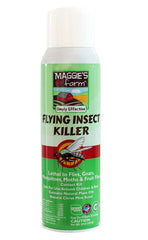There is a variety of effective pest control at-home products available to you and each type has its own applications.
Pest control products are best used as a complement to non-chemical
When using any pest control product, always be sure to read and carefully follow the directions on the product label, including proper use/application,
What Different Types of Pest Control Products Are There?

Sprays
Pest control sprays are liquids, applied either with a trigger-pump, hose-end sprayer, or as an aerosol. Liquid sprays are easy to apply, and are typically repellent to bugs, kill on contact, and provide residual protection.
Kill-on-contact effective bug sprays may take a few seconds, a few minutes, or even a few hours to affect a bug once sprayed, depending on the product and the
“
Spray tips:
- Read and follow label directions.
- Shake the container well before using, and periodically during use.
- For indoor applications with either an aerosol or trigger spray product, apply
product in cracks, crevices and void areas where bugs aremore likely to be found , not on baseboards, floors, etc. unless spraying bugs directly. Be sure to wipe away any excess. - For outdoor applications, apply products as a barrier spray around the house and/or yard to control active bug problems and to prevent future problems from occurring. Remember that it is easier to spray for crawling insects versus flying insects.
Here’s a more in-depth guide to using bug spray.

Baits
Baits function differently than sprays. While sprays cover a broad area,
Baits only work on specific types of bugs which
Baits need more time to work than sprays, but will usually give more lasting residual effectiveness against ants and roaches. Baits work especially well if the colony or nest is well-established and there are large numbers of ants or roaches. Another advantage of using
Baiting tips:
- Avoid applying bug spray on or near areas where you’ve applied a
bait , as you don’t want to repel bugs away from your bait. - Also, cleanliness is important when using baits, as nearby food/grease particles reduce the bait’s attractiveness to target bugs.
- When applying bait (gel, syrup), small, pea-sized drops spaced out every few feet are more effective than fewer, large gobs.
- When placing bait stations, space them out every few feet.
Learn more about spring ant baiting tips here

Dusts
While dust can b
Dusts can be repellent or non-repellent depending on the ingredients and are great for hard-to-control bugs like bed bugs and spiders (repellency may or may not be a benefit, depending on the bugs in question,
Dust application tips:
- Insect dusts come in the form of a very fine powder that is effective when thinly and evenly spread over a surface, or injected into wall voids, cracks, and crevices. Apply under and behind appliance and cabinets, in drawer wells, basements and other areas where bugs hide. Also apply in cracks around pipes, windows, etc. where bugs might enter your home from the outside.
- Applying dusts into out-of-the-way areas where pests hide make them most effective while minimizing product exposure to your family and pets.
- Some dusts come in plastic squeeze bottles that you can use for application into a void, but note that if you apply a dust too heavily, not only does it make an area look messy, bugs will
likely avoid the dust altogether. Just a light coating is all you need. - For bed bug control, try using a paint or craft brush to apply to mattresses, bed frames, baseboards, etc.

Traps
Traps work by attracting and then trapping bugs, so they usually contain a food or pheromone attractant, combined with some
Effective Pest Control Product Safety
- Always read and follow the product’s label directions and safety information for use and proper storage and disposal information.
- Apply dusts and baits in out-of-the-way areas inaccessible to children and pets.
- If using a spray indoors, ventilate the area as much as possible and keep children and pets out of treated areas until the liquid has dried and the room ventilated.
- Do not use pest control products directly on food surfaces.
- You can usually use pest control products both indoors and out, though some
are specifically labeled for outdoor use only. - Store pest control products in original containers only. Do not store other materials in empty pest control containers, no matter how much you’ve rinsed it out. Children and even adults have
been accidentally poisoned by consuming pest control product stored in old beverage containers. - Your community may offer household hazardous waste collection and will accept unwanted pest control products/containers.
How do you apply bug sprays, dusts, and baits? Leave us a comment below!





Check Out Our Line Up!
For





